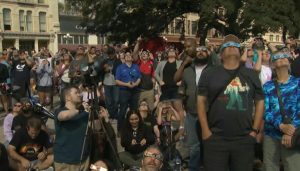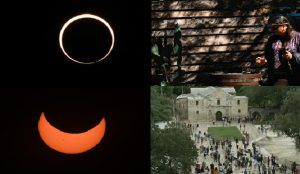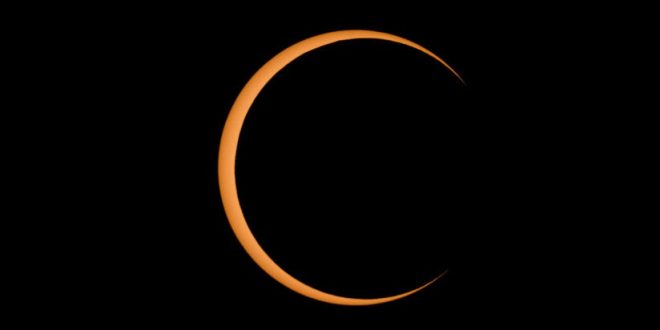16-10-2023
DALLAS: The solar eclipse, which began in the United States at 12:13pm on Saturday, was viewed by the public across states with the help of special glasses.
 While the “ring of fire” was not completely visible to the spectators with just over 80% coverage, it was termed a splendid sight.
While the “ring of fire” was not completely visible to the spectators with just over 80% coverage, it was termed a splendid sight.
The eclipse was visible on its path from Oregon to the Texas Gulf Coast, passing through states such as Nevada, Utah and New Mexico. It was also seen in parts of California, Idaho, Colorado and Arizona. The eclipse ended at 12:03am in the US.
Completing its time in the US, the eclipse was then expected to pass through Mexico, Belize, Honduras, Panama and Colombia. It eventually concluded over the coast of South America in Natal, Brazil.
Informing the American people about the eclipse, the National Aeronautics and Space Administration (NASA) had already warned them to not look directly at the sun, as it is unsafe. It advised they wear “specialized eye protection designed for solar viewing”.
Educating about the annular eclipse, Nasa said; “this event occurs when the Moon passes directly in front of the Sun, but appears too small to completely cover the Sun’s surface resulting in what appears as a ring of fire in the sky.”
“Everyone in the contiguous 48 states will have the opportunity to see at least a partial eclipse,” it added.
 Around high noon at the Alamo, the eyes of Texas, and hundreds of visitors, were looking towards the sky.
Around high noon at the Alamo, the eyes of Texas, and hundreds of visitors, were looking towards the sky.
“What’s better than to take your picture in front of the shrine of liberty here in the state of Texas, with an eclipse in the background,” said Kate Rogers with the Alamo Trust.
In Utah’s Bryce Canyon, people hiked into nature to witness the eclipse, while others flocked to the Griffith Observatory in Los Angeles to get a glimpse.
John Cuddy flew to San Antonio from North Carolina to watch the solar phenomenon. He witnessed the 2017 eclipse and didn’t want to miss this one.
“It’s just really cool,” Cuddy said. “It doesn’t happen often. Like I think there have only been a few over the continental United States in last couple of decades. It’s like a neat thing.”
The next eclipse will take place in April 2024. It will be a total eclipse, which means that from Maine to Texas, it will be briefly dark in the middle of the day. (Int’l Monitoring Desk)
 Pressmediaofindia
Pressmediaofindia




